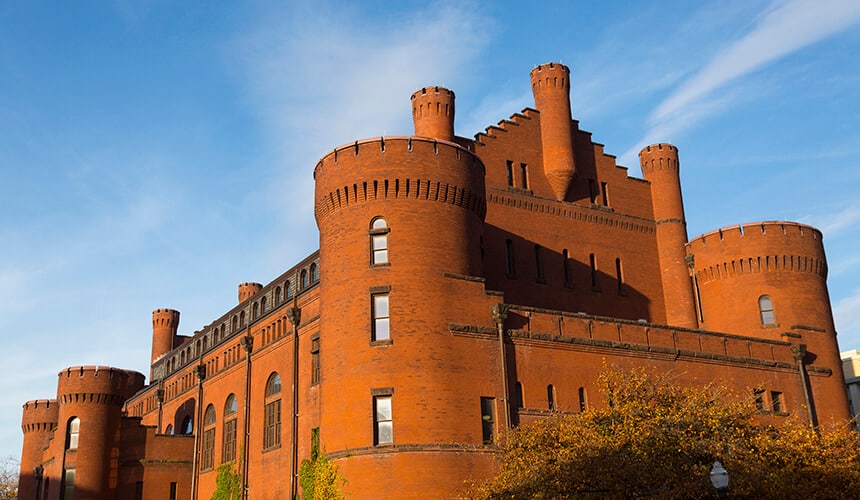
The Gymnasium and Armory (Red Gym)
One of UW–Madison’s most recognizable buildings, the Gymnasium and Armory (or Red Gym) packs more irony per square foot than almost any other structure on campus. The Red Gym was not initially intended to be red, and its dual name ignores that it initially had three functions, none of which it fulfills today. The Red Gym is actually the UW’s second gymnasium . The first was built on Bascom Hill in 1870 and burned in 1891. The initial designs for the new structure intended that it be made of stone, but this was too expensive, so the university switched to red brick. The castle-like appearance is more than architectural decoration — state leaders, fearing labor riots like the ones that had broken out in Chicago and Pennsylvania, decided that the university’s gym should also serve as a weapons depot for the national guard, so the building was designed as a fortress. UW leaders, seeing a rising student population, decided it should also function as the university’s assembly hall. The Red Gym opened in 1894, and by 1911, it was already obsolete — too small to accommodate a student body that had grown from 700 to more than 2,000 and ill-prepared for the addition of electric lights. The Red Gym housed UW basketball games until the Wisconsin Field House opened in 1930, and it housed the ROTC program until the 1970s, surviving a fire-bombing by the New Year’s Gang that would later bomb Sterling Hall. In the 21st century, the Red Gym was renovated to serve new purposes. It currently houses the Morgridge Center for Public Service, Multicultural Student Center, International Student Services, and LGBT Campus Center, among other entities.
The art for the Badger Pride Wall was created for WAA by Madison illustrator Nate Koehler.
 39° F
39° F